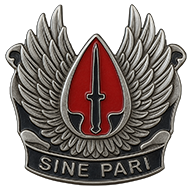On The X Helicopter Point Raids
Definition
An On The X helicopter raid is a direct-action technique where assault elements are inserted onto or within immediate proximity of the objective. This method prioritizes speed, shock, and surprise over standoff, and is executed when the operational requirement demands that the objective be seized before the enemy can react.
Purpose & Applicability
The technique is used when:
- The target is time-sensitive and cannot tolerate delay.
- Terrain or enemy disposition prevents offset landing zones.
- Surprise and tempo provide greater protection than distance or stealth.
- Follow-on exploitation requires immediate dominance of the objective area.
On The X raids are inherently high-risk due to aircraft exposure, but risk is mitigated by disciplined execution, rapid tempo, and overwhelming force applied at the point of contact.
Vulnerabilities
The aircraft is the critical vulnerability. It is exposed to small arms, crew-served weapons, RPGs, and MANPADS while on or near the ground. The assault force must reduce this exposure by:
- Exiting immediately on touchdown or low hover.
- Maintaining continuous flow — no bunching, no hesitation at the doors.
- Establishing assault pressure forward so that the aircraft can lift as soon as possible.
Execution
Inbound Phase
- Final comms checks occur during flight. Aircrew provides timing calls (“1 Minute,” “30 Seconds,” “10 Seconds”).
- Weapons are in a controlled state. Muzzles remain oriented safely inside the airframe until doors open.
- Chalk leaders confirm sequencing and responsibilities. Each Operator knows his sector, lane, and assault point.
Landing / Hover Phase
- The aircraft inserts at the designated X. This may be a rooftop, street intersection, or compound courtyard.
- The first Operators out establish immediate near-side and far-side orientation, providing a security buffer for the unloading chalk.
- Flow is deliberate and continuous. Operators exit in chalk order; no pauses are tolerated.
Assault Phase
- Operators do not consolidate or regroup on the X. The assault begins at the doors.
- Security is created by forward movement. As elements drive toward the target, sectors are owned, lanes are cleared, and dominance of terrain is achieved through momentum.
- Breach teams move directly to entry points, using preplanned assignments to prevent hesitation.
- Support elements secure detainees, casualties, and establish CCPs while maintaining outer coverage.
Aircraft Departure
- As soon as the last Operator is clear, the aircraft departs.
- No Operator provides security for the aircraft. The aircraft is self-sufficient; the assault force is responsible for securing the ground.
- Communications between ground force and aircrew shift to extraction coordination or immediate CAS/overwatch as applicable.
Objective Domination
- The raid force seizes and secures the objective before the enemy can react.
- Follow-on actions (exploitation, SSE, HVT capture) are conducted under the security bubble established by assault and support elements.
Exfiltration
- The X is resecured only at the time of exfil.
- Chalks reassemble in order, flow back to aircraft, and load in pre-assigned sequence.
- Aircraft lifts immediately; no time is spent on the ground beyond load sequence.
Critical Factors
- Time on the X is decisive. The longer the aircraft remains, the greater the risk to force and mission.
- The first thirty seconds after dismount determine success. Clean flow into sectors and rapid dominance of entry points overwhelm defenders.
- Every Operator must know his assignment before launch. Reorganization or confusion on the X will compromise tempo.
- Security is dynamic. It is not static cordon placement but rather generated through the momentum of assault.
Common Errors
- Bunching at the doors. Delays flow, exposes Operators and aircraft.
- Fixation on the aircraft. Once dismounted, Operators orient forward; the aircraft is not the Operator’s concern.
- Sector gaps. Failure to cover assigned slices creates vulnerability and potential fratricide.
- Over-consolidation. Attempting to rally or pause on the X wastes time and forfeits surprise.
Training Priorities
- Repetition of load/unload drills until execution is automatic under NVGs, live fire, and stress.
- Assault under time pressure. Reinforce the thirty-second window as decisive.
- Aircrew integration. Operators and pilots train together to synchronize timing, calls, and expectations.
Key Notes
- On The X = Direct infil to the target.
- Aircraft vulnerability dictates tempo. Immediate dismount is mandatory.
- Assault begins at the doors. No pause, no regroup.
- Flow is smooth and continuous
- Security is created through speed.
- Aircraft is not your focus once dismounted.
- First 30 seconds are critical to overwhelming the enemy.
- Rehearsal ensures instinctive execution.

